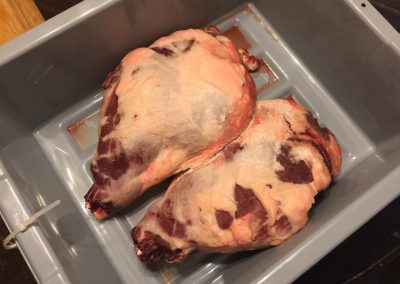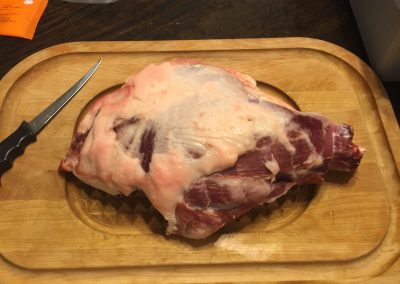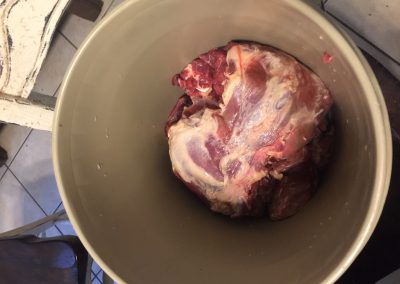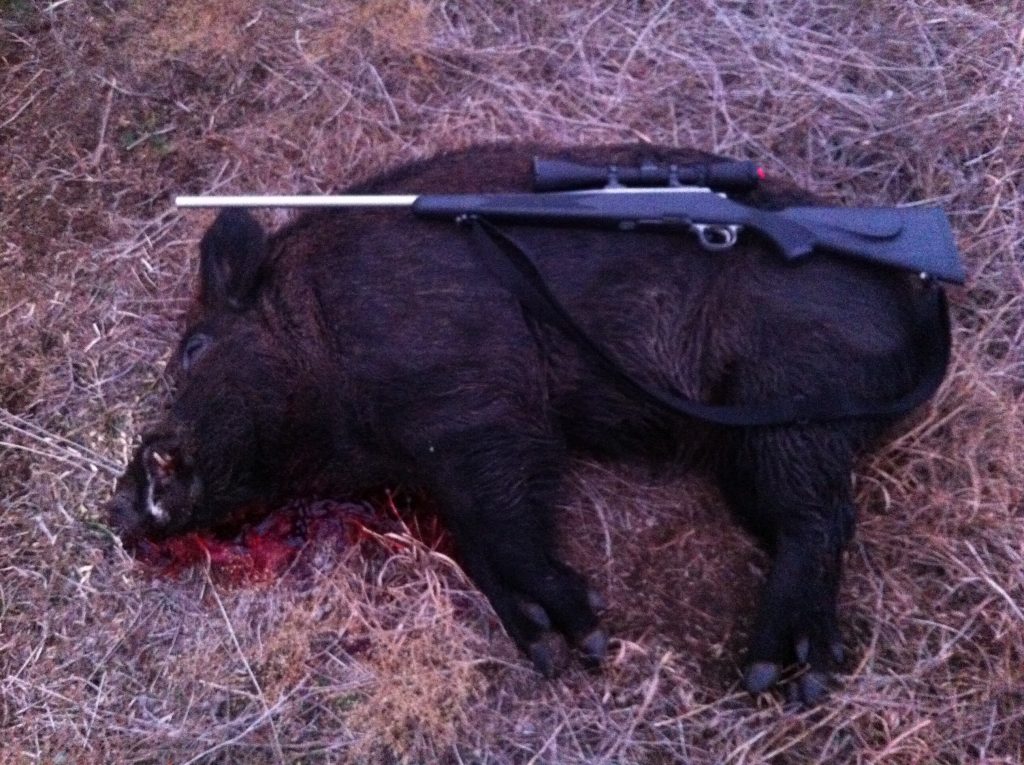
Feral hogs, the scourge of the Texas landscape.
Feral hogs can be an infestation that inflicts many millions of dollars of damage on pasture land, farm land and water sheds across the U.S. Hogs are responsible for many a ruined deer hunt as well and can sometimes ruin a hunting area.
In response to this threat, we shoot them on-sight, shoot them from helicopters, we trap them, we snare them and we are even trying to sterilize them! Despite our best efforts, their populations continue to grow. If you can beat’em … EAT’EM!
Wild hog meat is darn good and even better if you know what you are doing. A very dear friend of Feed Bandit is one of those fellas that knows what he is doing and lets no decent size hog go to the buzzards! Get ready to hit the print button, this is one recipe you will want to use again and again!
Now I have to admit I am not a ham guy. Sure, I like a good honey baked ham … especially the crunchy stuff but as general lunch meat ham I can pass anytime.
Many year ago our good buddy was in charge of bringing dinner one time to deer camp. He shows up with a few loafs of bread and a big bag of what looks to be ham lunch meat.
He says to me, “Rich, try some of this” My friend is a great cook…especially breakfast…so I had no doubt that what I was about to put in my mouth would be good but I was not prepared for GREATNESS. It was the best tasting, thin-cut ham I had ever had and it was shot at the place we hunt! I was hooked. I asked him to share his recipes.
Wild Hog Table Ham Ingredients:
1 package of sure cure also known as pink cure (enough for 25 lbs)
3/4 cup Kosher Salt per 2 quarts of water
1 cup brown sugar per 2 quarts of water
Water enough to cover meat
Trim and De-bone ham.
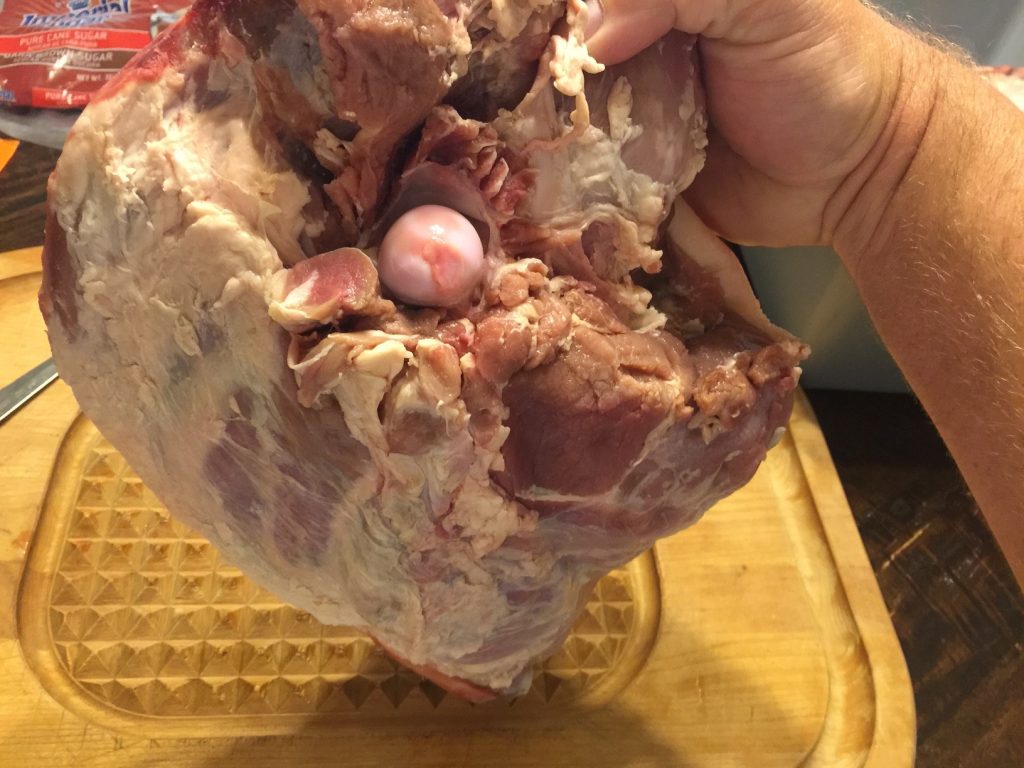
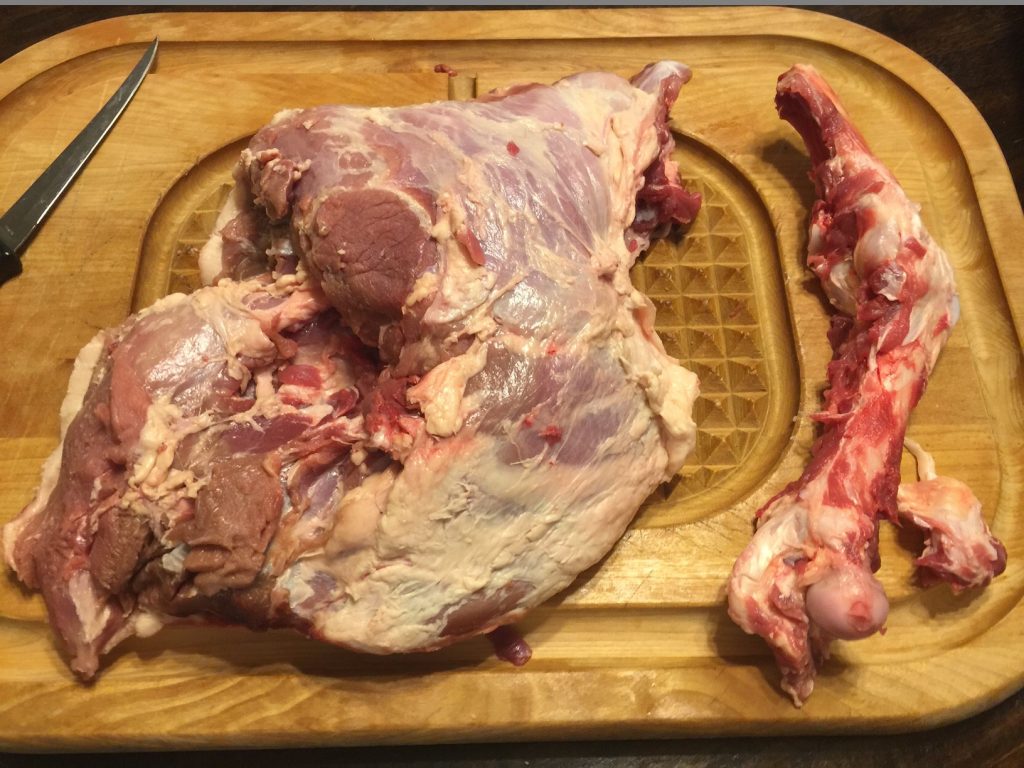
Place ham in a container large enough to completely submerge it yet still fit in your refrigerator. I recommend a 5 gallon bucket if you can fit it into your fridge. A spare garage refrigerator works best as the ham will sit in the cure for at least a week, 2 weeks if you are doing both hams from a wild pig.
Measure out water 2 quarts at a time. A large pitcher works well. I typically cure two de-boned hams at a time and 4 quarts will cover the meat.
Remove the hams from the water and mix in the cure, salt, and sugar. Stir until ingredients are dissolved.
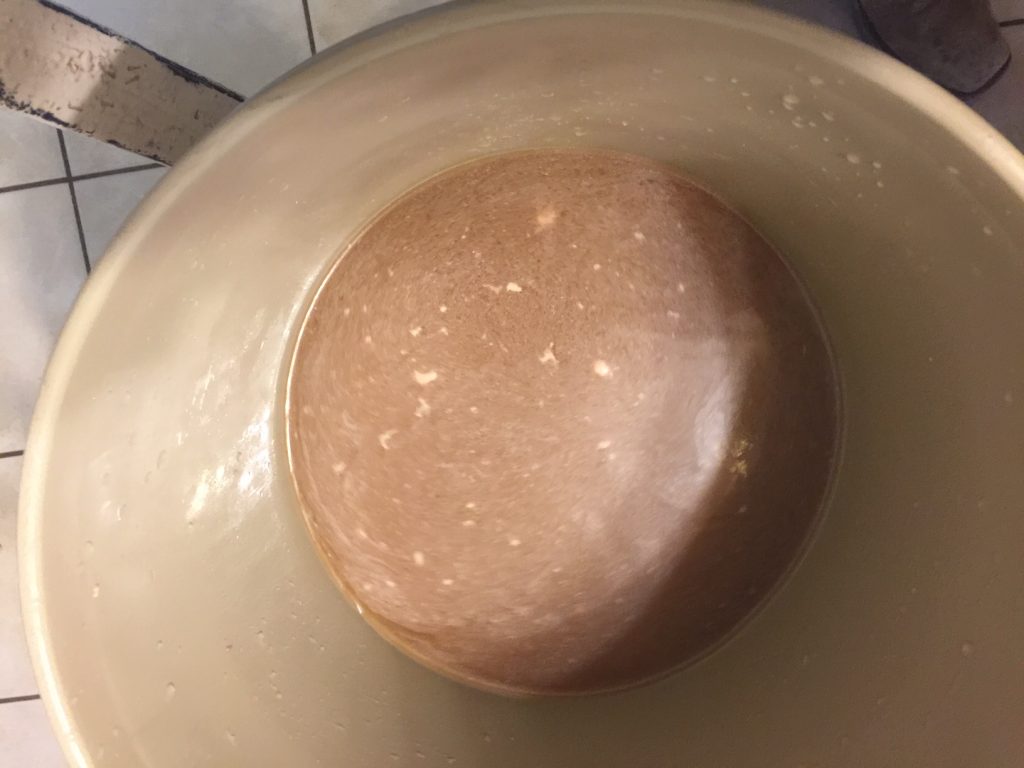
Place hams back in water. The hams have to stay submerged. You may need to use a platter or something heavy to hold them under the water. I use a large bowl and put something in it as a weight (a large coffee can filled with water with the top on it works well).
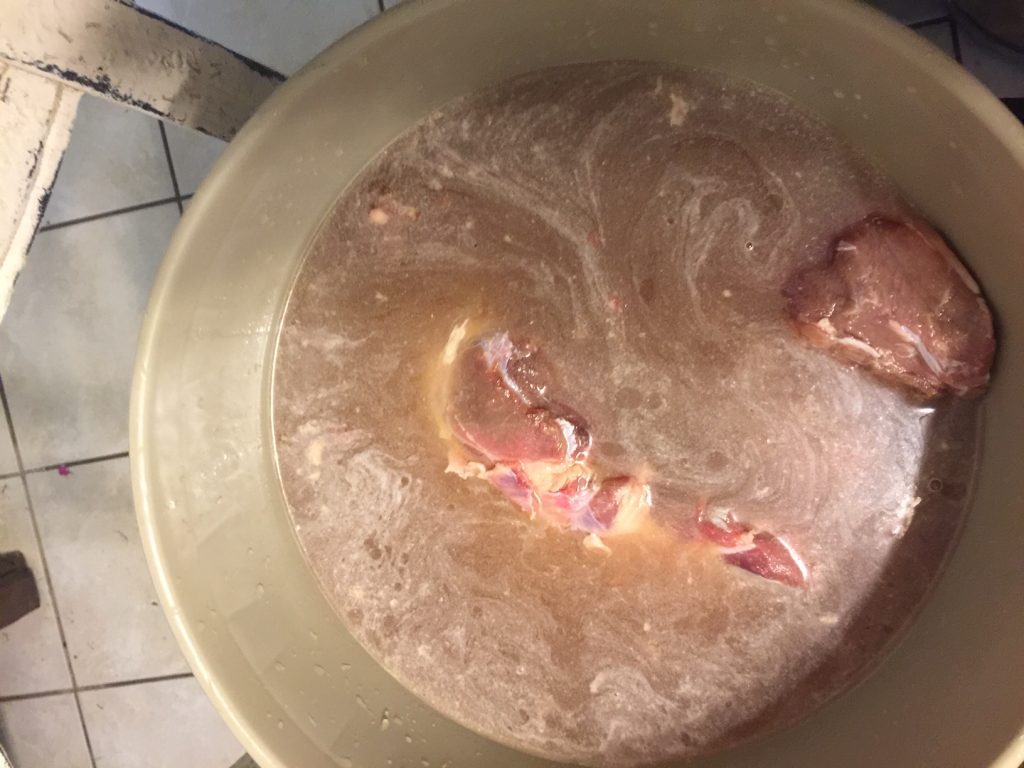
Place container in the refrigerator. The hams typically cure at a rate of 2 lbs/day. I recommend at least 2 weeks if you are curing two hams.

After two weeks have passed, fire up the smoker, remove the hams from the cure and smoke them as you would a pork shoulder. After they have been smoked, wrap them up and chill in the refrigerator over night.
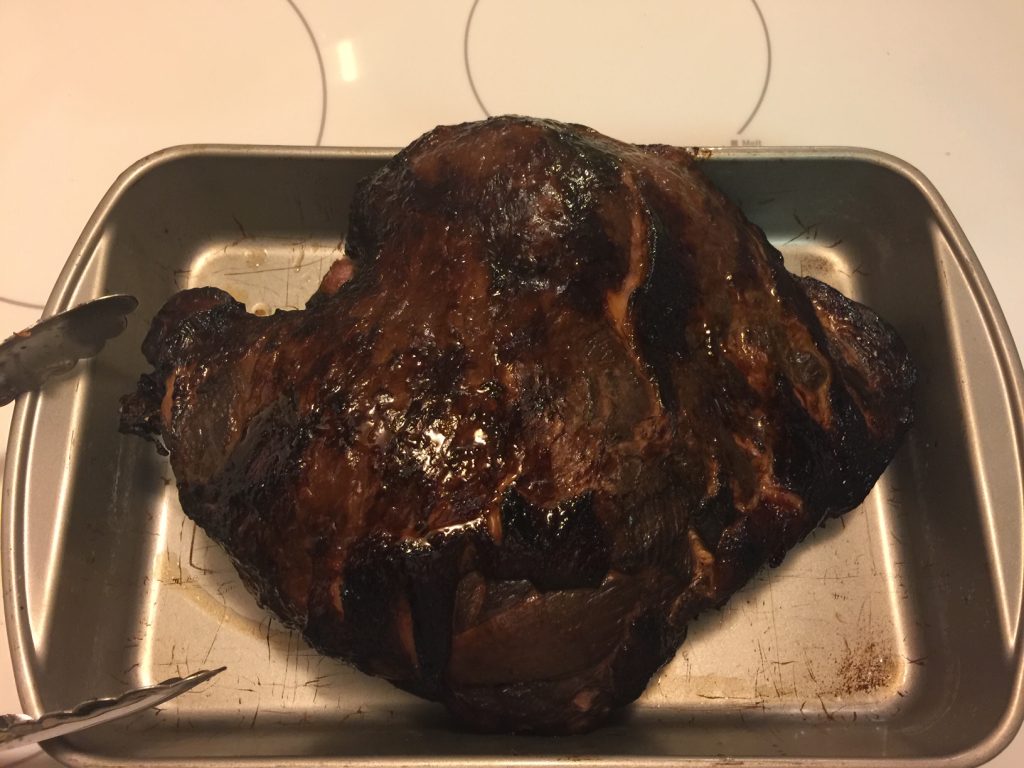
Once chilled you can slice for ham steaks or sandwiches, dice for omelets, or any other way you eat ham. At a good butcher shop you can typically get them to slice it on their spiral slicer for about $1/lb.

We promise that once you do this you’ll never pass up cleaning the hams out of a perfectly sized pig again!
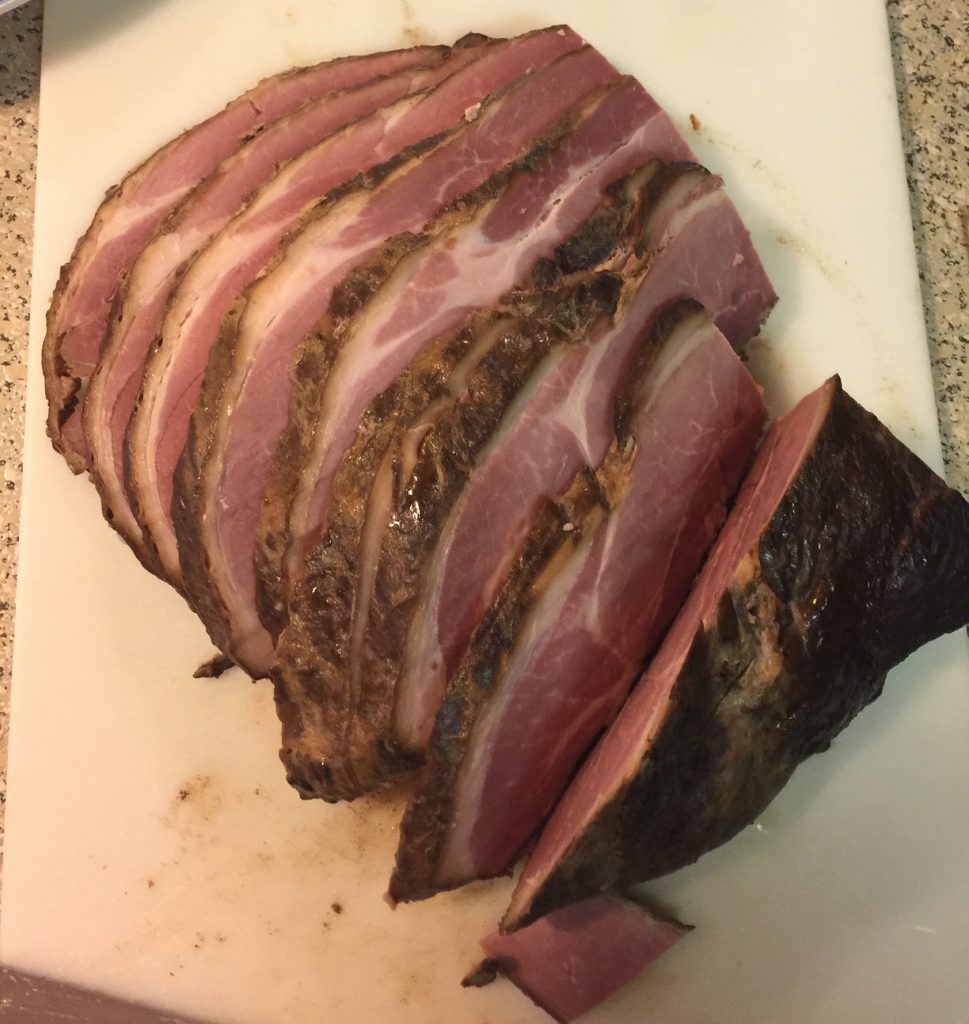
Too bad we can’t cook other pests…like rats…and politicians.


